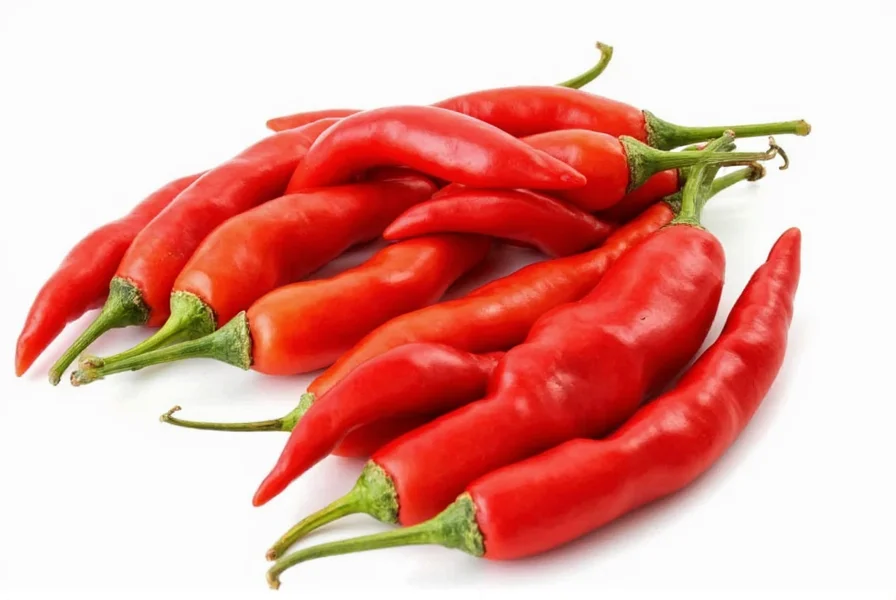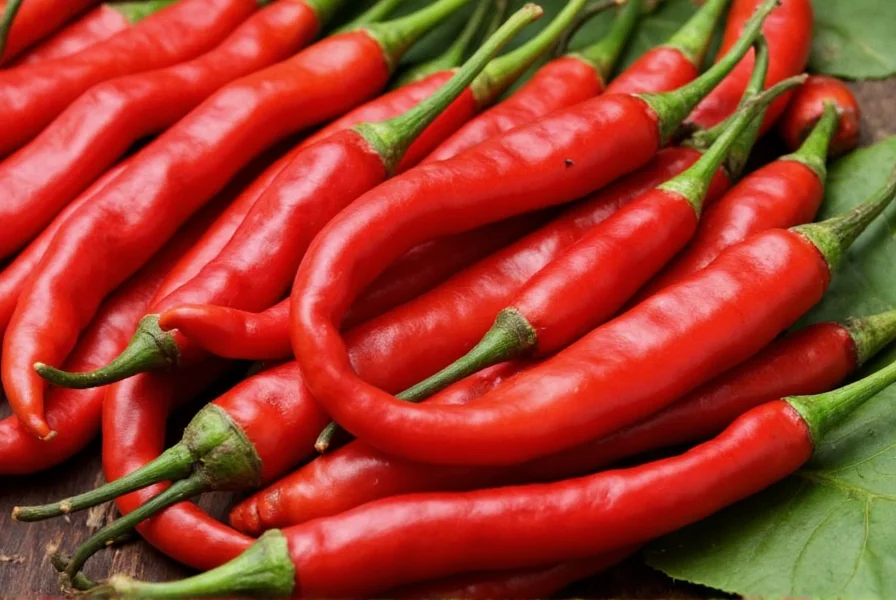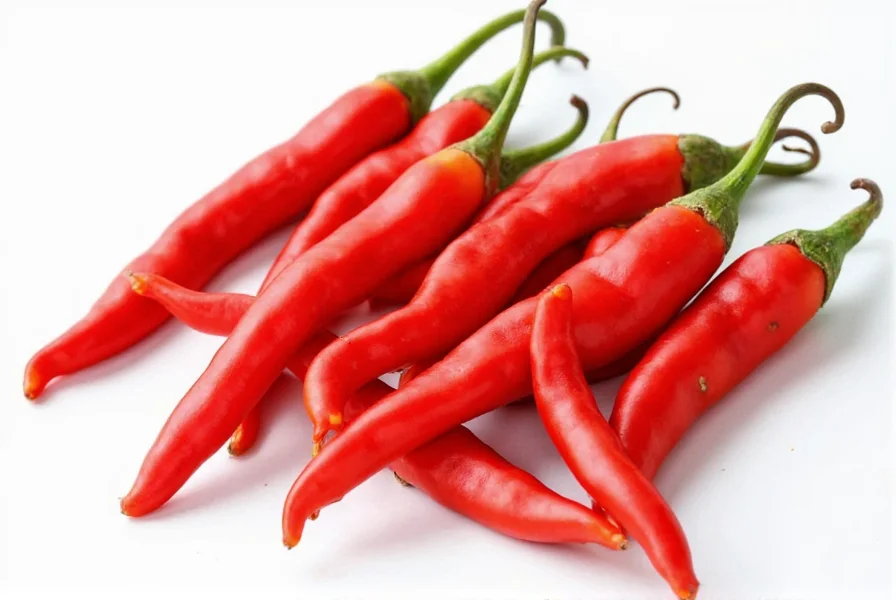Cayenne pepper chillies represent one of the most widely recognized hot peppers globally, prized for their distinctive heat and versatility. These medium-heat peppers belong to the Capsicum annuum species and serve as the primary ingredient in cayenne pepper seasoning. Understanding their unique properties helps home cooks, gardeners, and health-conscious individuals make informed decisions about incorporating them into daily life.
Understanding Cayenne Pepper Characteristics
What distinguishes cayenne pepper chillies from other hot peppers is their consistent shape, heat level, and maturation pattern. These peppers typically grow 2-5 inches long with a thin, tapered body that transitions from green to vibrant red as they ripen. The heat compounds concentrate primarily in the white pith and seeds, though the entire pepper contains capsaicinoids responsible for their signature burn.
| Pepper Type | Scoville Heat Units | Physical Characteristics | Common Uses |
|---|---|---|---|
| Cayenne | 30,000-50,000 SHU | Slender, 2-5" long, tapered, red when mature | Cooking, supplements, topical pain relief |
| Jalapeño | 2,500-8,000 SHU | Thick-walled, 2-3" long, green to red | Salsas, pickling, stuffed peppers |
| Habanero | 100,000-350,000 SHU | Small, lantern-shaped, orange or red | Hot sauces, Caribbean cuisine |
| Serrano | 10,000-23,000 SHU | Small, 1-4" long, bright green to red | Pico de gallo, hot sauces |
Historical Journey of Cayenne Peppers
Indigenous peoples in Central and South America first cultivated cayenne peppers over 6,000 years ago. Christopher Columbus encountered these fiery peppers during his voyages to the Americas, mistakenly naming them "peppers" due to their pungent similarity to black peppercorns. Portuguese traders subsequently spread cayenne peppers to Africa, India, and Asia, where they became integral to many regional cuisines. The name "cayenne" derives from the French Guianese city of Cayenne, where these peppers were commonly traded.
Culinary Applications of Cayenne Pepper Chillies
Cayenne pepper chillies offer more than just heat—they contribute a distinctive fruity, slightly smoky flavor that enhances dishes without overwhelming other ingredients. Professional chefs and home cooks use them in various forms:
- Fresh cayenne peppers work well in salsas, stir-fries, and as a pizza topping
- Dried whole peppers infuse oils, vinegars, and broths with controlled heat
- Cayenne powder provides consistent heat in spice blends, rubs, and baked goods
- Crushed red pepper differs from cayenne powder as it typically contains multiple pepper varieties
When substituting cayenne pepper chillies in recipes, remember that 1 fresh cayenne equals approximately 1/8 teaspoon of cayenne powder. For those sensitive to heat, removing the seeds and white membranes significantly reduces spiciness while maintaining flavor.

Health Benefits Supported by Research
The active compound in cayenne pepper chillies, capsaicin, has been extensively studied for its potential health benefits. Scientific research indicates several evidence-based applications:
- Pain management—Topical capsaicin creams help reduce nerve pain by depleting substance P
- Metabolic support—Studies show capsaicin may increase calorie burning by 50 calories daily
- Circulatory health—Cayenne may help improve blood flow and reduce blood pressure
- Digestive aid—Moderate consumption stimulates digestive enzyme production
However, excessive consumption can cause gastrointestinal discomfort. Individuals with ulcers, GERD, or sensitive digestive systems should consult healthcare providers before regular consumption. The difference between cayenne pepper chillies and milder peppers lies in their higher capsaicin concentration, which drives both their heat and therapeutic potential.
Growing Your Own Cayenne Pepper Plants
Gardening enthusiasts can successfully grow cayenne pepper chillies with proper conditions. These plants thrive in warm climates with at least 6-8 hours of direct sunlight daily. Start seeds indoors 8-10 weeks before the last frost, maintaining soil temperatures around 80-85°F (27-29°C) for optimal germination.
When transplanting outdoors, space plants 18-24 inches apart in well-draining soil with a pH of 6.0-6.8. Consistent watering (without waterlogging) and balanced fertilizer every 3-4 weeks support healthy growth. Most varieties mature in 70-80 days from transplanting, producing peppers that start green and gradually turn red as they ripen.

Differentiating Cayenne from Similar Peppers
Many people confuse cayenne pepper chillies with other hot peppers. While cayenne shares the Capsicum annuum species with jalapeños and serranos, it differs significantly in heat and flavor profile. Unlike bird's eye chilies (Capsicum frutescens), which have a sharper, more immediate heat, cayenne provides a more gradual warmth with subtle fruit notes.
Understanding the difference between cayenne pepper chillies and red pepper flakes proves essential for precise cooking. Commercial red pepper flakes typically contain a blend of辣椒 varieties including cayenne, but also often include milder peppers like bell peppers, resulting in less consistent heat. Pure cayenne powder delivers more predictable spiciness for recipes requiring specific heat levels.
Proper Storage Techniques for Maximum Freshness
To preserve cayenne pepper chillies, store fresh peppers in a paper bag in the refrigerator's vegetable drawer for up to 2 weeks. For longer storage, freeze whole peppers on a baking sheet before transferring to airtight containers—they'll remain usable for 6-8 months. Dried cayenne peppers maintain potency for 1-2 years when stored in dark glass containers away from heat and moisture.
When processing your harvest, remember that handling cayenne pepper chillies requires caution. Always wear gloves when cutting hot peppers and avoid touching your face. The capsaicin compounds can remain active on surfaces for days, causing unexpected irritation.
Frequently Asked Questions
How hot are cayenne pepper chillies compared to other common peppers?
Cayenne pepper chillies measure 30,000-50,000 Scoville Heat Units (SHU), making them significantly hotter than jalapeños (2,500-8,000 SHU) but milder than habaneros (100,000-350,000 SHU). They provide consistent medium heat that builds gradually rather than delivering an immediate intense burn like some hotter varieties.
Can I substitute cayenne pepper for fresh chillies in recipes?
Yes, but with careful measurement—1/8 teaspoon of cayenne powder generally equals one fresh cayenne pepper. Remember that cayenne powder delivers more concentrated heat than fresh peppers since water content dilutes fresh pepper heat. When substituting, start with less than you think you need and adjust gradually.
What's the difference between cayenne pepper and red pepper flakes?
Cayenne pepper is made from ground pure cayenne peppers, while red pepper flakes typically contain a blend of辣椒 varieties including cayenne, bell peppers, and other hot peppers. This makes cayenne powder more consistently hot, while red pepper flakes vary in heat level depending on the blend. For precise heat control in recipes, cayenne powder offers more predictable results.
How can I reduce the heat of cayenne pepper chillies when cooking?
Remove the seeds and white pith (placenta) where most capsaicin concentrates. Cooking cayenne peppers longer reduces their heat intensity, as does pairing them with dairy products like yogurt or cheese, which contain casein that binds to capsaicin. Adding acid (lemon juice, vinegar) or sweetness (honey, sugar) also helps balance excessive heat in finished dishes.
Are there any safety concerns with handling cayenne pepper chillies?
Always wear gloves when handling hot cayenne peppers and avoid touching your face, especially eyes. The capsaicin oils can cause severe irritation and remain active on surfaces for days. If you experience skin irritation, wash with soap and water, then apply milk or yogurt to neutralize the capsaicin. Never use water alone, as it spreads the oil rather than removing it.











 浙公网安备
33010002000092号
浙公网安备
33010002000092号 浙B2-20120091-4
浙B2-20120091-4